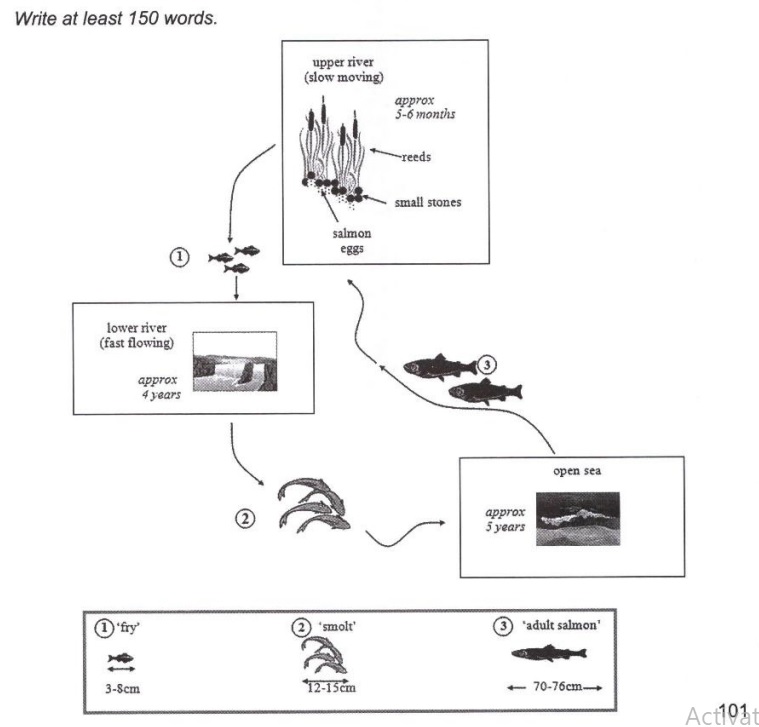The life cycle of the salmon
The diagrams below show the life cycle of a species of large fish called the salmon.
Summarise the information by selecting and reporting the main features, and make comparisons where relevant.
My Essay:
The pictures illustrate the way in which the salmon passes from infant to adult during the natural process known as the life cycle.
Overall, the process has different stages starting from a higher stream through a lower stream and eventually to the ocean.
Beginning at the watercourse, which flows sluggishly, the salmon exists as an embryo in fertilized eggs, interspersed among pebbles right at reed stumps in the riverbed. About half a year later tiny fry, which are from one third to nearly 1 decimeter in size, leave the nest of gravel to prepare for a new life downstream.
The second phase labelled "lower river" with the swift current lasts roughly 48 months until when they have grown to between 5 and 6 inches in smolt's body length.
Finally, the juvenile fishes gather at river estuary to travel offshore and thenceforth they officially enter adulthood. They spend 5 birthdays before reaching the size of three-quarter meter to be able to swim against the current in the river where they were born and lay eggs there to reset a new cycle for the next generation.
(215 words)

Untitled.jpg
